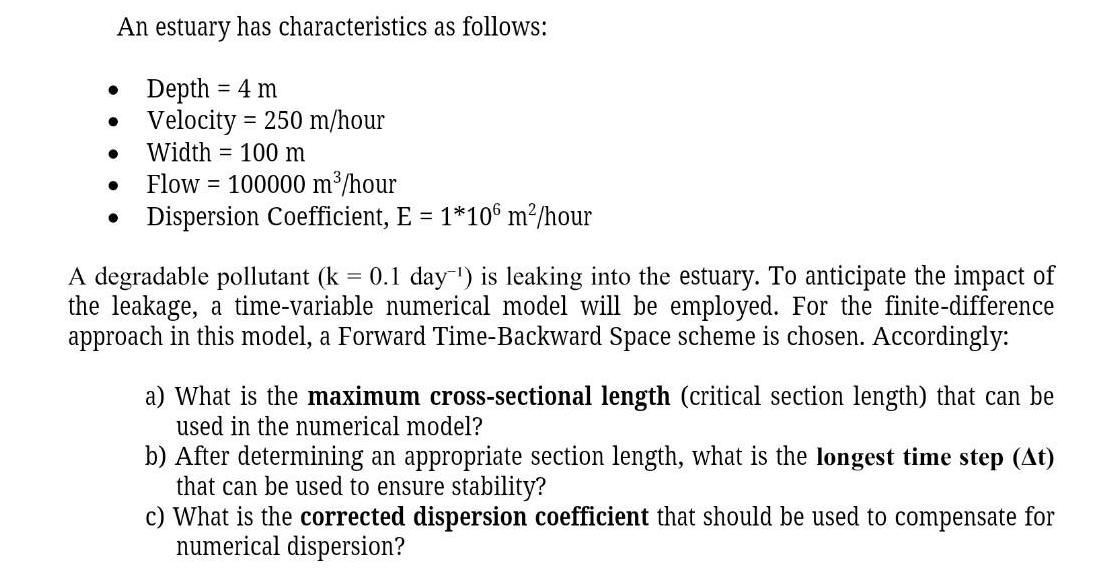Answered step by step
Verified Expert Solution
Question
1 Approved Answer
An estuary has characteristics as follows: Depth = 4 m Velocity 250 m/hour = Width 100 m Flow = 100000 m/hour Dispersion Coefficient, E

An estuary has characteristics as follows: Depth = 4 m Velocity 250 m/hour = Width 100 m Flow = 100000 m/hour Dispersion Coefficient, E = 1*106 m/hour A degradable pollutant (k = 0.1 day) is leaking into the estuary. To anticipate the impact of the leakage, a time-variable numerical model will be employed. For the finite-difference approach in this model, a Forward Time-Backward Space scheme is chosen. Accordingly: a) What is the maximum cross-sectional length (critical section length) that can be used in the numerical model? b) After determining an appropriate section length, what is the longest time step (At) that can be used to ensure stability? c) What is the corrected dispersion coefficient that should be used to compensate for numerical dispersion?
Step by Step Solution
★★★★★
3.36 Rating (146 Votes )
There are 3 Steps involved in it
Step: 1
To address the problem stated in the image we will employ concepts from environmental engineering re...
Get Instant Access to Expert-Tailored Solutions
See step-by-step solutions with expert insights and AI powered tools for academic success
Step: 2

Step: 3

Ace Your Homework with AI
Get the answers you need in no time with our AI-driven, step-by-step assistance
Get Started


